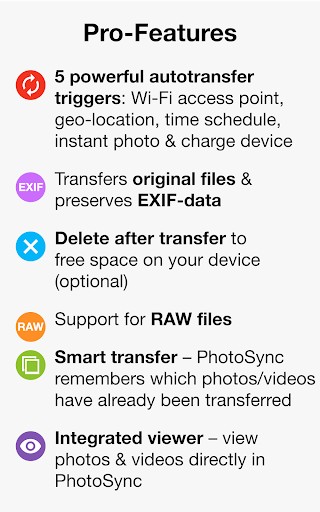
Reboot photosync on terminal full#
I strongly recommend making a full backup of your Photos library, if not a fresh full clone of your drive or forcing a Time Machine update, before proceeding.įind your Photos library and Control-click it, and then select Show Package Contents. Warning! Apple doesn’t advise making these kinds of low-level changes. After reading years’ worth of posts of people trying to overcome the problem, I tried one suggestion: deleting a deeply nested folder in the Photos library that tracks iCloud synchronization. This can force a re-sync, though often it’s relatively fast as Photos and iCloud seem to bypass pictures that are in both places. Disabling iCloud Photos and re-enabling it in Photos > Preferences > iCloud.Rebuild the Photos database by holding down Command-Option while launching the app and following prompts.Replace with the username server name that you want to restart. The -t option forces the remote system to enter the command in a terminal. (This is a little tweaky and can cause problems, so I hesitate to recommend it. The ssh command tells your system to connect to another machine. Using the Terminal to “kill” certain Photos-related background agents and jobs.If you have an account on Pastebin, please don't select Private from the Paste Exposure menu on the page, because then no one but you will be able to see it. To restart a computer now or at a specific time using Terminal, you can use the shutdown command or the systemsetup command. Please post the text on Pastebin, then post a link here to the page you created. When you post the log extract, you might see an error message on the web page: "You have included content in your post that is not permitted," or "The message contains invalid characters." That's a bug in the forum software. Some private information, such as your name, may appear in the log. Please don't post screenshots of log messages-post the text. Please don't indiscriminately dump thousands of lines from the log into this discussion. A few dozen lines are almost always more than enough. When posting a log extract, be selective. The log contains a vast amount of information, almost all of it useless for solving any particular problem. Paste into a reply to this message by pressing command-V. Select the messages entered from then until the end of the episode, or until they start to repeat, whichever comes first.Ĭopy the messages to the Clipboard by pressing the key combination command-C. If you don't see that list, selectįrom the menu bar at the top of the screen.Įach message in the log begins with the date and time when it was entered. If it isn't, selectįrom the log list on the left. The title of the Console window should be All Messages.

☞ Open LaunchPad and start typing the name. The application is in the folder that opens. ☞ In the Finder, select Go ▹ Utilities from the menu bar, or press the key combination shift-command-U. Login into Server Administration page Stop all servers except Administration and Storage Server Perform Backup Now from Backup & Restore After system reboot. Select it in the results (it should be at the top.) ☞ Enter the first few letters of its name into a Spotlight search. Launch the Console application in any one of the following ways: If you have only one user account, you are the administrator. When done in Recovery mode, run the following from the Terminal in Recovery mode: nvram -d recovery-boot-mode. This sets a firmware variable in nvram indicating that you want to start in Recovery mode on the next boot, and then reboots the machine. These instructions must be carried out as an administrator. You can do that using the following command: sudo nvram 'recovery-boot-modeunused' sudo reboot.

When you notice the problem, note the exact time: hour, minute, second. You can do that using the following command: sudo nvram 'recovery-boot-modeunused' sudo reboot.


 0 kommentar(er)
0 kommentar(er)
